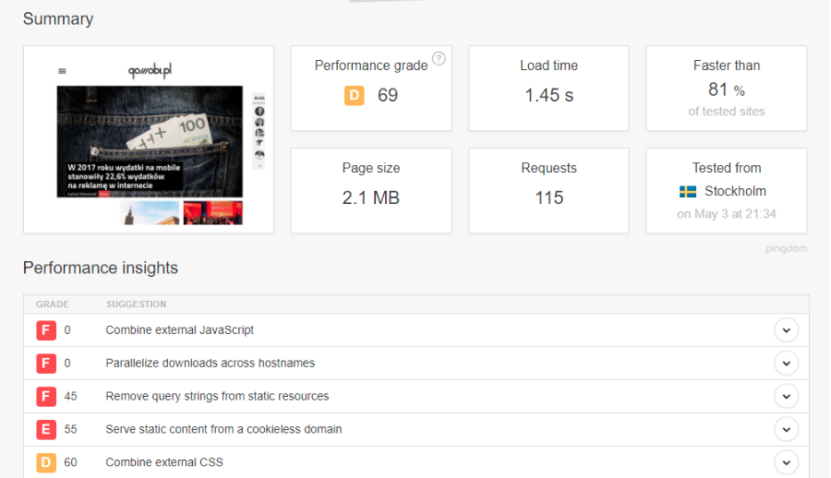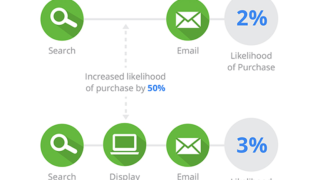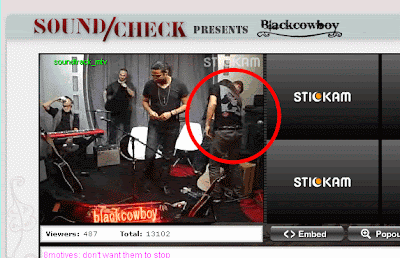Find out how to measure conversion from mobile. Part 2
One of the main reasons we don't see conversions from the mobile channel is because we're monitoring it wrong. Conversion consists of a combination of different user behaviors – converting as a result of visits to multiple devices and choosing the wrong attribution model or last click, which I wrote about previously. So if we know what not to do, it's worth knowing how to do it properly.
Correctly understand the source of traffic
Both in Facebook Ads and AdWords campaigns we very often forget that the converting user has to come back to us – either after some time, or by changing the device, or just come back after comparing offers. The channel that will collect a lot of these conversions is Google/Organic, which is the inputs seemingly from SEO. Here, however, words such as the address of the website, company name or names of products and services with the company name will have a very high share in generating visits. The presence of (so-called. The data (not provided) in Google Analytics will effectively hinder any analysis, but checking the data in Google Search Console will show the share of such queries in the total number of. The problem is that where we were able to study this very closely, the brand words generated a much higher conversion rate, and the number of sessions generated varied very dynamically depending on the spend on other campaigns. Display advertising generated a significant increase in hits from this channel.
To better demonstrate that digital analytics is not such an obvious thing, I offer you an experiment. Imagine: you open a page and keep it in a bookmark in your browser for some time. Notice that it opens in the background every time and goes into your browsing history. Do you know how Analytics will work in this case? Will it charge a new session every time you launch the browser or only when you launch a particular tab? I encourage you to check – and the first person to get back to me with a solution on My LinkedIn follower gets one of my books.
Data driven attribution
Assigning a share of conversions to data partially solves the problem of „last click”. Why? Because we only use account data to determine which ads or keywords have the most impact. In AdWords the system compares the click paths of users who convert and those who don't, trying to identify patterns that lead to conversions. For this to work properly, you need a lot of data. 15 thousand clicks in Google search and 600 conversions within 30 days, which can tell us a lot about the size of the website that can benefit from this system.
Source: https://support.google.com/analytics/answer/3191594
In this example – for Google Analytics 360 – a combination of free search results, display advertising and email marketing, leads to a 3% probability of conversion. After removing the display ad from the path, the probability drops to 2%. An increase of 50% is observed when a display ad is present (serves as a basis for attribution).
Therefore, if we are dealing with a smaller store or site, we need to understand the different models and choose between them consciously. If conversions are not occurring directly, it is essential to find those paths that are most likely to generate sales and support them with higher manual rates.
Finally, pay attention to these three aspects that, no matter how you monitor your results, can influence low conversions.
1. When building a site you need to think mobile first. Meanwhile, many business owners have not even seen their website on a smartphone. Run console in Chroma browser (F12) and enable (Ctrl+Shift+M) resolution changes and check especially shopping process. Interaction with menus, interaction with forms or search engine are also must-haves. If you are interested in UX, also read this guide from Google.
2. I wrote previously about the analysis of speed – here in addition to the Google tools you can run in the console Network slow link mode > Online > Slow 3G, or use Lighthouse audit. Also run tools.pingom.com and GT Metrix audit to see what you can improve on the pages of your site.

Good result gomobi.pl (1.45s) can still be optimized according to Pingdom
3. Think about the device and the possibilities:
– more gestures on the page like „swipe” instead of „click”;
– Use click-to-call buttons;
Focus on one path to conversion – optimize for direct purchase, and in the background make it easy to also browse the assortment and look for new inspiration.


